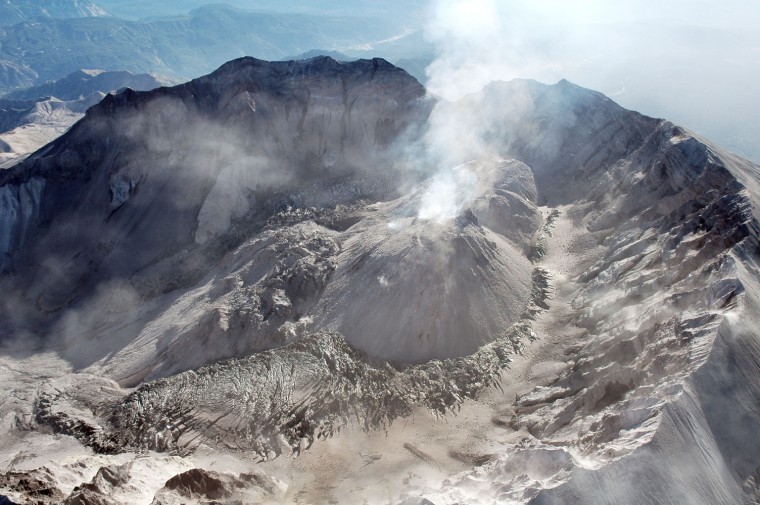Despite ongoing volcanic activity for the last two years, there is no indication Mount St. Helens is on the verge of a repeat performance of its cataclysmic 1980 eruption, scientists said Wednesday.
Mount St. Helens, in southwestern Washington state, reawakened in the fall of 2004 with new eruptions, and has produced thousands of shallow, regular, repetitive earthquakes since then.
Writing in the journal Nature, scientists led by Richard Iverson of the U.S. Geological Survey said these quakes appear to result from the movement of a huge plug of igneous rock known as dacite being shoved out of the volcano.
The good news, they said, is that the volcano appears to be brooding rather than bursting, and the recent quakes seem unlikely to be a harbinger of a massive eruption along the lines of the one that occurred on May 18, 1980.
That one blew off the upper 1,300 feet (400 meters) of the mountain, leveled thousands of acres of forest land, killed 57 people and coated the region with gritty ash. The eruption was triggered by a magnitude 5.1 earthquake that shook Mount St. Helens.
"There's really nothing that we've seen over the past two years that would indicate that a major explosive eruption is on the way," Iverson said in an interview.
But Iverson gave himself a little bit of wiggle room.
"Now, of course, things could always start to change. If we saw, for example, dramatic increases in the amount of gas that was coming out of the volcano or dramatic increases in deformation, then we would revise our forecasts," he said.
Most active volcano in Cascades
Mount St. Helens is the most active of the volcanoes in the Cascade Mountains, and geologically young compared to the others. It is believed to have the potential at some point in the future for another big eruption.
"I know everybody was conditioned by the May 1980 eruption to think of Mount St. Helens as this very explosive volcano. And certainly it had done that prior to 1980 and will do that again in the future. But this ongoing eruption is of a completely different style," Iverson said.
Scientists call what is going on now a dome-building eruption and note that it has continued on a steady basis for a bit longer than two years.
The huge plug of rock now being shoved out of Mount St. Helens is going at a rate of about 10 to 20 feet (3 to 6 meters) per day, advancing in fits and starts and triggering tremors, the scientists found.
Mount St. Helens, standing 8,363 feet (2,550 meters) in elevation, is located about 100 miles (160 kilometers) south of Seattle and 50 miles (80 kilometers) northeast of Portland, Oregon.
